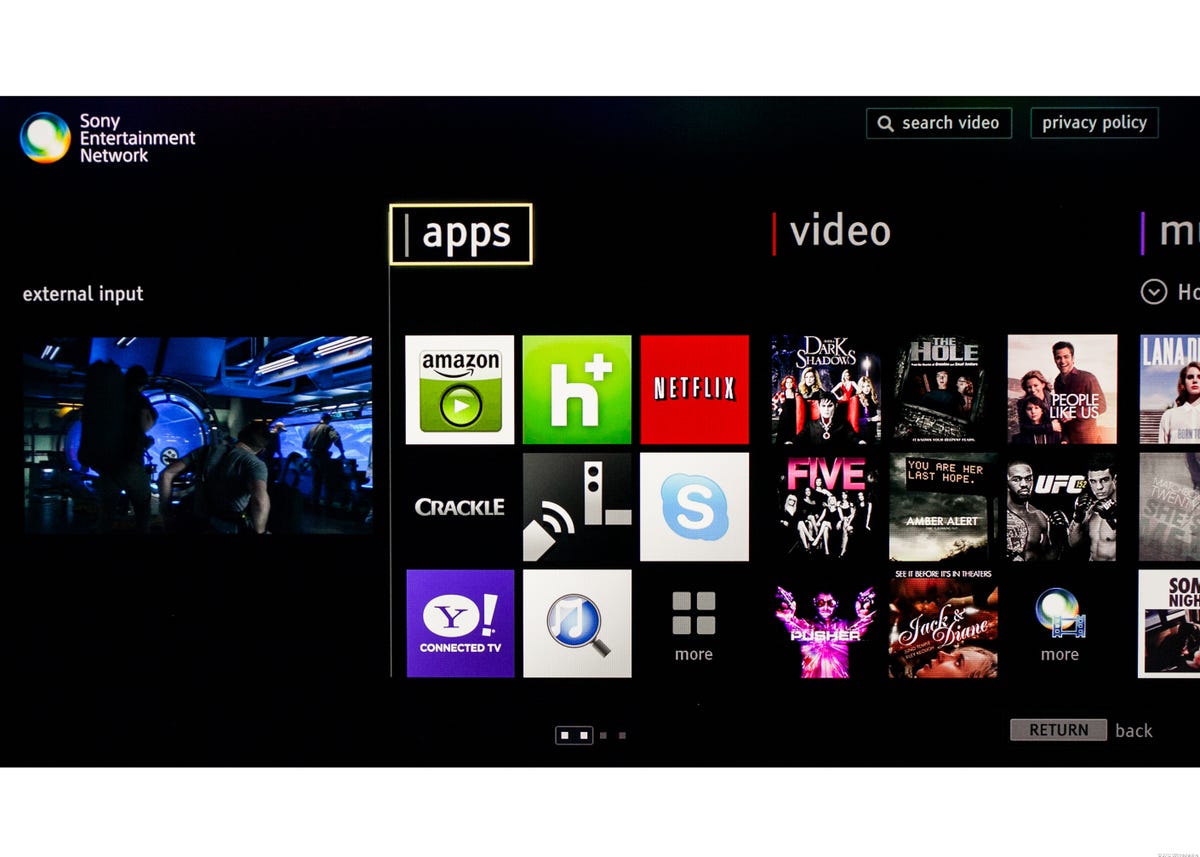
Sarah Tew/CNET
If you’ve got a smart TV and a sound bar or a receiver and speakers, chances are you want to get the audio from the TV’s apps through those speakers.
I mean, that’s why you bought them, right?
Well, depending on how you’ve set them up, it might not be possible. If you’ve been pulling your hair out trying to figure this one out, there are a few solutions. Here are all of them.
If you’re reading this article, I’m going to make a few assumptions about how you’ve got your gear connected. I can make this assumption, because if you’re having the issue we’re talking about, it’s a pretty safe bet you have it connected in a specific way.
Namely, you’ve got your sources (cable box, Blu-ray player, and so forth) connected to the sound bar or receiver, and then have a single HDMI cable running from that to the TV. Sound familiar?
What’s actually going on
The problem is, with the setup listed above, the TV is just a monitor. You’re sending it content, but nothing’s coming back.
I like to explain signal flow like water. Your sources are the wells; water comes from them. It flows through the pipes (the cables) to things. A receiver distributes water, but the sound bar and TV are the lovely fountains that display the water (or let you hear it gurgling).
The fountain can’t send water back into the well. As in, your TV, as connected right now, is not a source. It can only receive.
Solution 1: Add an optical cable
For most people, the easiest solution is to add an optical cable. This allows the TV to send audio (from its apps or tuner) back to the sound bar or receiver.
Nearly all TVs have an optical output. A few might have coax digital (orange), which is effectively the same.
A few TVs might only have analog audio outputs (check the label near the connection). If your sound bar or receiver doesn’t have spare analog inputs, you can get an inexpensive converter to make it optical. Here’s a cheap one with good ratings from Amazon.
Some receivers use “sensible” names like “cable” for their inputs that don’t correlate to the physical input name — say “Optical 1” — and so, if this is the case you may need to “assign it.” Check your user manual if this applies to you.


Sarah Tew/CNET
Solution 2: ARC
If your gear is new, it’s possible it has ARC, or Audio Return Channel. This sends the TV’s audio back down the HDMI cable to the receiver or sound bar.
A few things to check. First, both pieces of gear need to be ARC-compatible (that is, the TV and the sound bar or receiver). Newer gear usually is, but older gear isn’t. Next, not all HDMI outputs and inputs are ARC-compatible. If you look at the connections on the gear, one will usually be labeled “ARC.” Many TVs have this as Input 2. To get the sound working on your receiver, you may need to set the input to “TV”, but check your user manual for the input name.
Your current HDMI cable should work, but I have gotten some emails saying that older HDMI cables don’t pass ARC. Replacing it with a new one ( cheap is still fine), solved the issue.
You can learn more in ” What is Audio Return Channel?“
Solution 3: Dumb down your TV
I put this one last as I don’t normally like advising people to get new gear when their current gear works. But if the above solutions don’t work for you, consider getting a media streamer. When it comes down to it, no smart TV offers the breadth of apps or ease of use of a good media streamer. We like the Roku 3 and Apple TV. They’re each about $100 or £70 but offer far more content choices, and almost always have a slicker, faster interface.
If your TV is wall-mounted, or it would be otherwise hard to run new cables, this is probably your only option. Though involves spending money (and not using a feature on your TV), take solace in the fact that the experience after that is a good one.
Bottom line
If you’re not getting sound from your TV’s apps through your sound bar or receiver, it’s likely because there’s no cable connected to get the app audio back down to the sound bar or receiver. An optical cable should do the trick, but if not, make sure you have the amp set to the correct input.
Is your setup different? Let me know in the comments, and I’ll try to help you out.
Got a question for Geoff? First, check out all the other articles he’s written on topics like why all HDMI cables are the same, LED LCD vs. OLED, why 4K TVs aren’t worth it, and more. Still have a question? Send him an email! He won’t tell you what TV to buy, but he might use your letter in a future article. You can also send him a message on Twitter @TechWriterGeoff or Google+.




